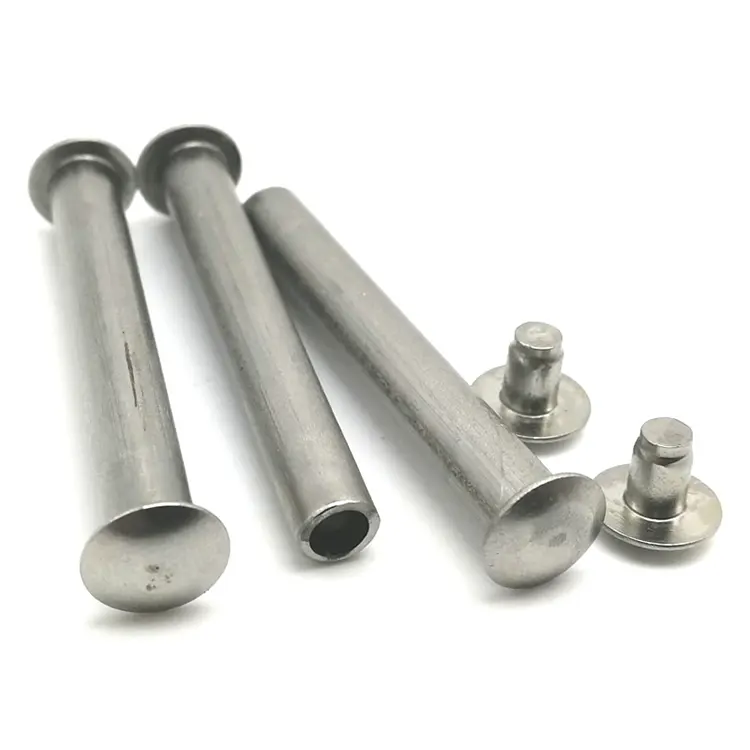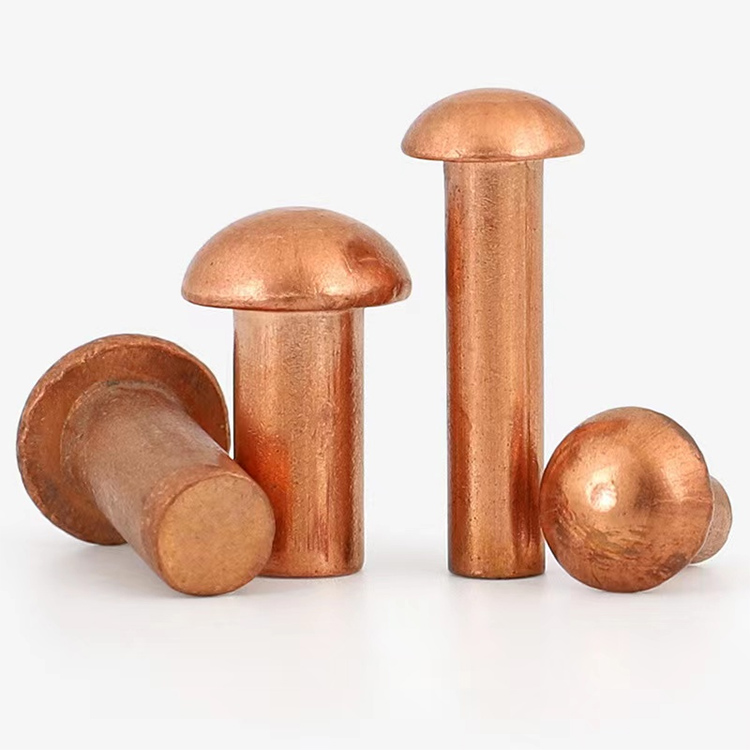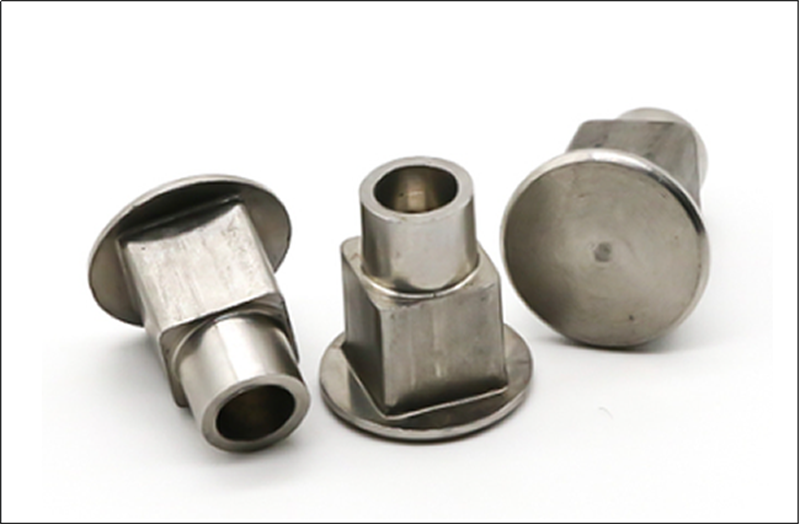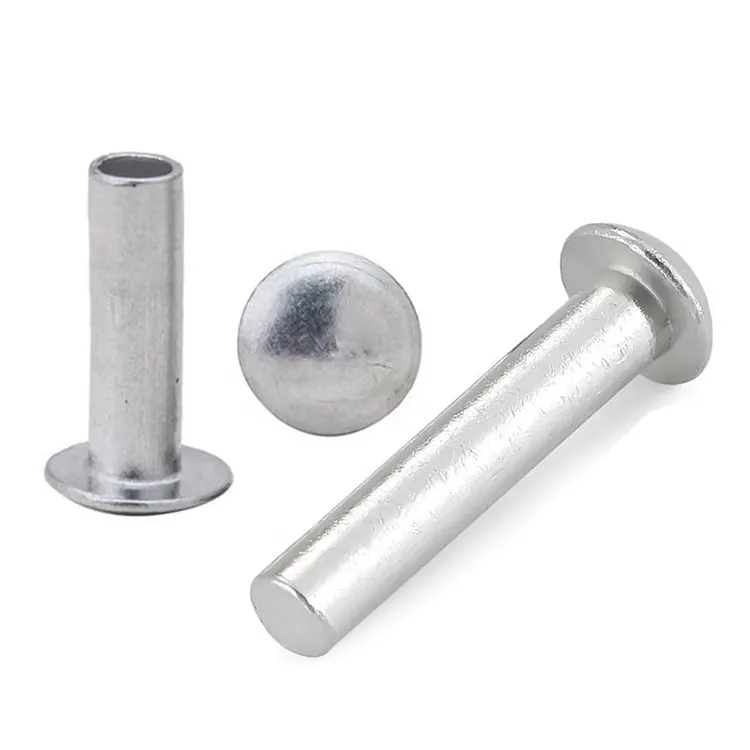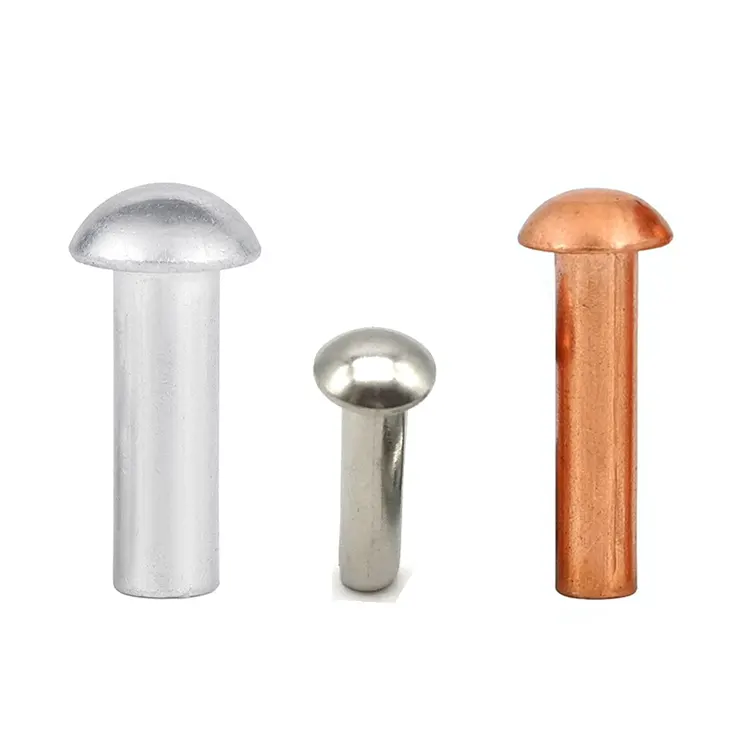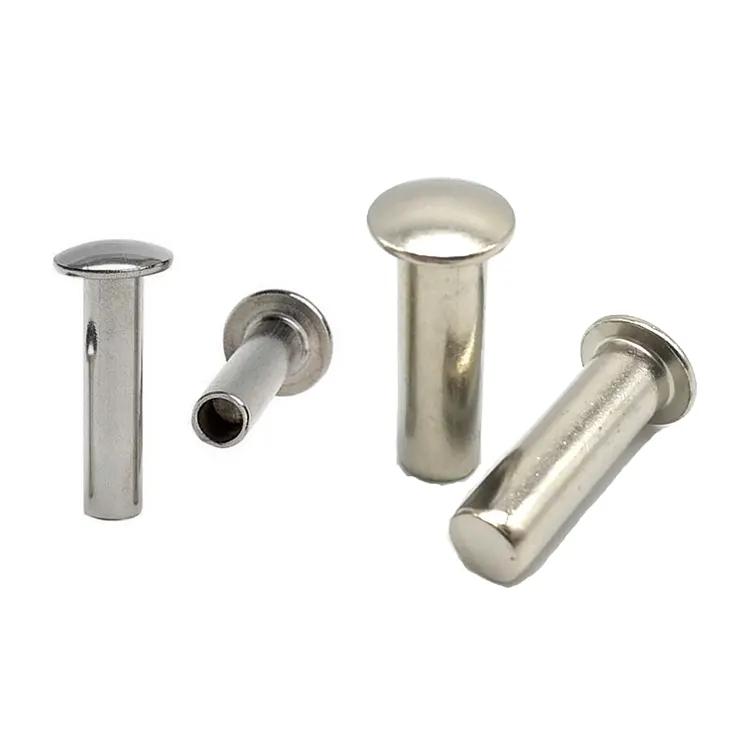Rivets spéciaux
One of Chinese manufacturer of Special Rivets, offering excellent quality at a competitive price, is Notin. Feel free to get in touch.
In the field of mechanical manufacturing and assembly, rivets are a common fastener used to professionally connect two or more parts. According to the degree of standardization, rivets can be divided into two categories: standard rivets and non-standard rivets. The size, shape and material of standard rivets are uniformly specified, while non-standard rivets are customized according to specific needs. The following will introduce the characteristics and applications of non-standard rivets from multiple aspects.
What are non-standard rivets?
Non-standard rivets are also called special rivets. They refer to rivets that do not meet national standards or industry general standards. Their size, material, structure and other parameters are designed and manufactured according to the specific needs of customers. Due to the different connection requirements of different industries and equipment, standard rivets may not meet the requirements of certain special scenarios, so non-standard rivets came into being.
What are the characteristics of special rivets?
(1) Strong customization: Non-standard rivets can be personalized according to factors such as the use environment, stress conditions, and assembly methods to ensure that they perform well in actual applications.
(2) Diverse materials: In addition to common carbon steel and stainless steel, non-standard rivets can also be made of special materials such as aluminum alloy, copper alloy, titanium alloy, etc. to meet different corrosion resistance, strength and weight requirements.
(3) Flexible structure: The structure of non-standard rivets can be adjusted according to needs, such as head shape, stem diameter, length, etc., and can even be designed to be hollow, semi-hollow or other special shapes.
- View as
Rivets à tête cylindrique
Les rivets à tête cylindrique sont des composants mécaniques utilisés pour fixer ou connecter des matériaux métalliques. Ils sont largement utilisés dans la production industrielle, la fabrication de machines, la réparation automobile et d’autres domaines. La fonction d'un rivet est d'insérer le tube du rivet dans les deux pièces de métal à assembler. La forme de la tête du rivet et la section du tuyau compriment le rivet, créant ainsi une connexion étanche. Nuote Metals est spécialisé dans la production de rivets à tête cylindrique. Nous disposons de plus de 40 machines de frappe à froid et de milliers de matrices, avec une capacité de production quotidienne allant jusqu'à 10 millions de rivets. Nous accueillons les commandes personnalisées basées sur vos dessins et échantillons.
En savoir plusenvoyer une demandeRivets peints
Les rivets peints avec tête peinte sont très résistants à la corrosion. La couche de peinture, généralement d'une épaisseur de 15 à 25 microns, les isole efficacement de l'humidité et des produits chimiques. Les tests au brouillard salin montrent que les rivets peints peuvent résister à la rouille pendant plus de 500 heures, soit trois fois plus longtemps que les rivets non revêtus. Nuote Metals est spécialisé dans ce type de rivets, nous sommes situés à Dongguan, en Chine.
En savoir plusenvoyer une demandeRivets à tête champignon
Le nom de rivet à tête champignon vient de son apparence et de ses caractéristiques structurelles. Une extrémité du rivet est en forme de champignon et relativement large, offrant une meilleure surface de compression et un meilleur effet esthétique. Les rivets semi-tubulaires à tête champignon ont une conception semi-creuse à l'autre extrémité. Lors de l'installation, un outil spécial est utilisé pour élargir la partie creuse afin de former une connexion sécurisée. Cette conception permet au rivet de s'adapter à différentes épaisseurs de matériaux après l'installation, tout en conservant un joint soigné et esthétique. Des rivets à tête champignon solides sont également disponibles, qui sont vissés pour former une tête en forme de champignon à l'extrémité arrière, créant une connexion à la fois esthétique et sécurisée.
En savoir plusenvoyer une demandeRivets mâles femelles
Nuote Metals est un fabricant spécialisé de rivets mâles femelles en Chine. Les avantages des rivets mâles femelles sont une installation simple et un faible coût. Comparés à d'autres méthodes de connexion, telles que le soudage ou les adhésifs, les rivets mâles femelles ne nécessitent pas de compétences spécialisées ni de longs temps de durcissement. Cependant, leurs inconvénients sont également importants : la force de connexion est limitée, ce qui la rend inadaptée aux environnements à forte intensité ou à fortes vibrations. Après une utilisation prolongée, ils peuvent se détacher et nécessiter une inspection régulière.
En savoir plusenvoyer une demandeRivets moletés
Les rivets moletés se composent généralement d'une tête, d'une tige et d'une queue. La tige présente un motif moleté diagonal ou droit, une texture usinée en relief qui offre une meilleure adhérence lors de l'installation et empêche le glissement de l'outil. La tige est cylindrique, avec une longueur et un diamètre variant en fonction de l'application. Les tailles courantes vont de 3 mm à 8 mm de diamètre et de 5 mm à 20 mm de longueur. La queue peut également avoir des filetages ou des rainures pour s'accoupler avec des écrous ou d'autres attaches.
En savoir plusenvoyer une demandeRivets à tête ronde en fer
Les rivets à tête ronde en fer sont une fixation largement utilisée dans la fabrication industrielle et dans la vie quotidienne. Leur conception unique et leurs excellentes performances en font un choix de premier ordre dans de nombreux domaines. Nuote Metals est spécialisé dans la production de rivets à tête ronde en fer. Les dimensions de nos rivets respectent strictement les tolérances précisées sur les plans du client. Chaque processus est soumis à un cycle de contrôle qualité pour garantir la qualité du produit final. Nous disposons de dizaines de machines de frappe à froid, avec une production quotidienne de dizaines de millions de rivets.
En savoir plusenvoyer une demandeWhat are the characteristics of special rivets?
(1) Strong customization: Non-standard rivets can be personalized according to factors such as the use environment, stress conditions, and assembly methods to ensure that they perform well in actual applications.
(2) Diverse materials: In addition to common carbon steel and stainless steel, non-standard rivets can also be made of special materials such as aluminum alloy, copper alloy, titanium alloy, etc. to meet different corrosion resistance, strength and weight requirements.
(3) Flexible structure: The structure of non-standard rivets can be adjusted according to needs, such as head shape, stem diameter, length, etc., and can even be designed to be hollow, semi-hollow or other special shapes.
Manufacturing process of special rivets
The manufacturing of non-standard rivets involves multiple links, mainly including:
1.Material selection: Select suitable metal or alloy materials according to the use environment. 2. 2.Cold heading or hot heading: Use pressure processing to form the basic shape of the rivet into the metal blank.
3.Turning or milling: Fine-process the details such as the head and stem of the rivet to ensure dimensional accuracy.
4.Surface treatment: Such as galvanizing, nickel plating, anodizing, etc. to improve corrosion resistance or aesthetics.
Advantages and limitations of special rivets
(1) Advantages: They can meet special needs, improve assembly efficiency and connection reliability, and are suitable for complex or high-demand application scenarios.
(2) Limitations: Since they are customized products, the production cost is high, the delivery cycle is relatively long, and customers are required to provide detailed technical parameters.
How to choose suitable special rivets?
(1) Clarify the needs: Determine the key parameters such as the rivet's operating environment, stress conditions, and corrosion resistance requirements.
(2) Material matching: Select the appropriate material based on actual needs to avoid over-design that leads to increased costs.
(3) Communicate with suppliers: Provide detailed technical drawings or samples to ensure that the non-standard rivets produced meet expectations.
What are the main applications of special rivets?
(1) Aerospace: Aircraft, rockets and other equipment have extremely high requirements for the weight, strength and high-temperature resistance of fasteners. Non-standard rivets can be optimized according to specific needs.
(2) Automobile manufacturing: Certain special models or high-performance vehicles may require non-standard rivets to meet the needs of lightweight or high-strength connections.
(3) Electronic equipment: Precision instruments or small electronic equipment may require micro non-standard rivets to ensure the stability and compactness of the connection.
(4) Construction industry: Some special-structured buildings or decoration projects may use non-standard rivets to meet specific installation requirements.
Market status of special rivets
With the advancement of industrial technology, more and more industries have begun to use non-standard rivets to optimize product design. At present, non-standard rivet manufacturers are mainly concentrated in the Yangtze River Delta and Pearl River Delta regions in China, and can provide a variety of customized services. Due to the high unit price of non-standard rivets, its market size is relatively small, but the demand in the high-end manufacturing field continues to grow.
Future development trends
(1) Lightweight design: With the improvement of energy-saving and environmental protection requirements, non-standard rivets made of lightweight materials will be more popular.
(2) Intelligent production: Automated equipment and digital management will further improve the production efficiency and quality stability of non-standard rivets.
(3) Wider application: Emerging industries such as new energy and robotics may drive the growth of demand for non-standard rivets.
In summary, special rivets are highly customized fasteners that can meet special needs that standard rivets cannot meet. Although its production cost is relatively high, it plays an irreplaceable role in industries such as aerospace, automobiles, and electronics. In the future, with the advancement of manufacturing technology, the application scope of non-standard rivets is expected to further expand.

